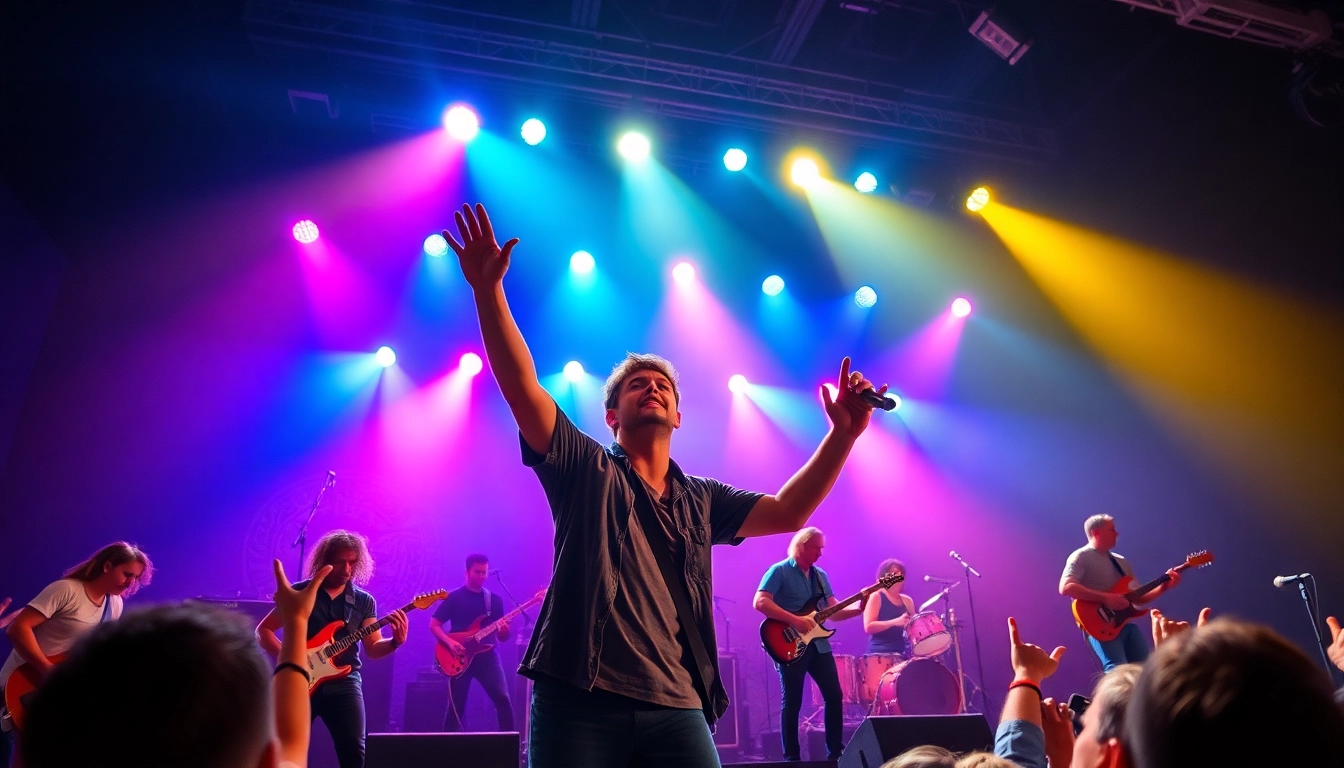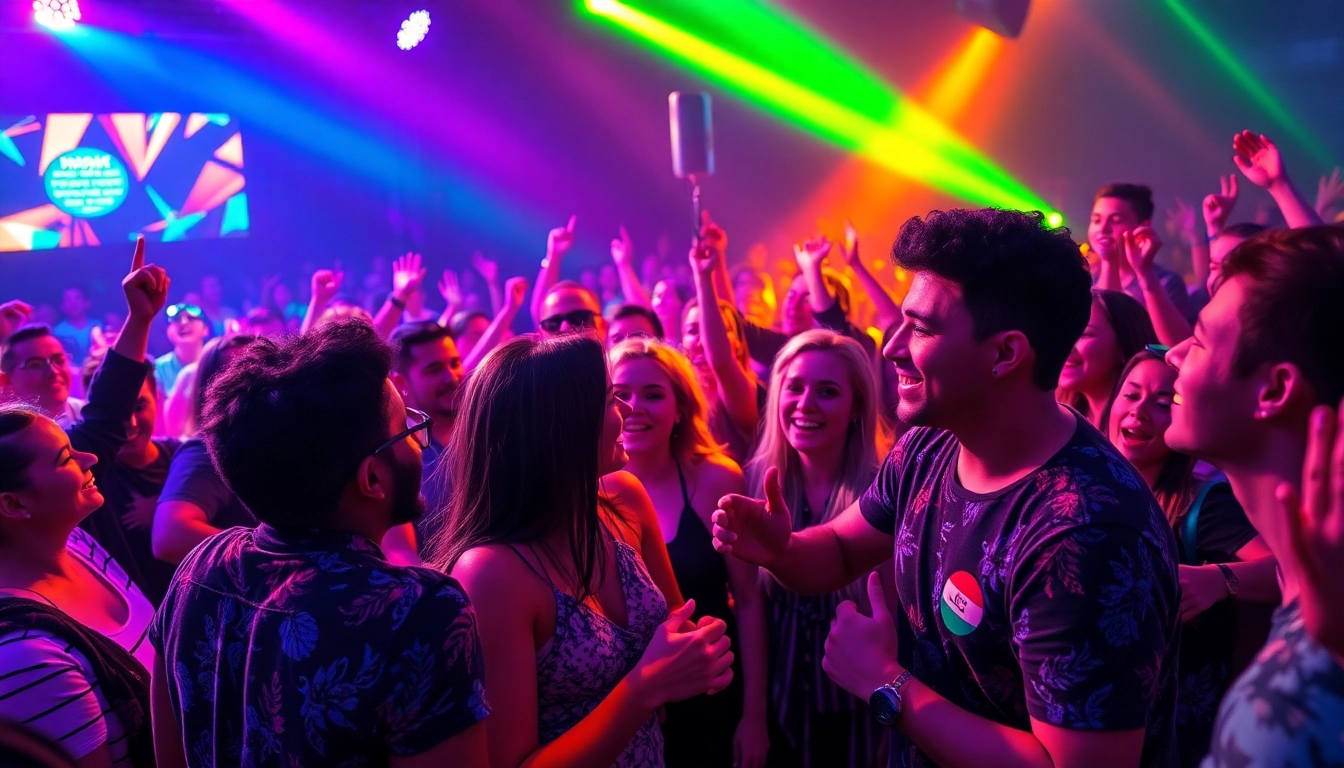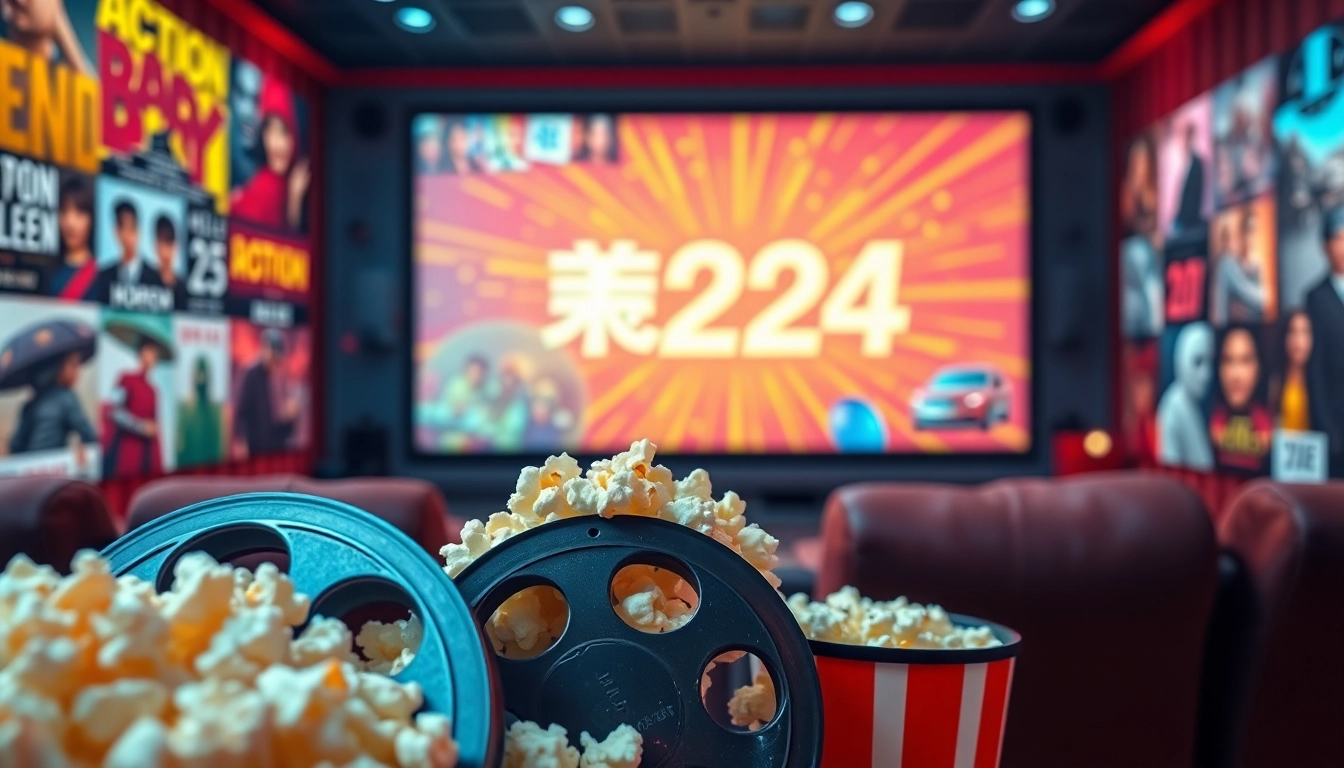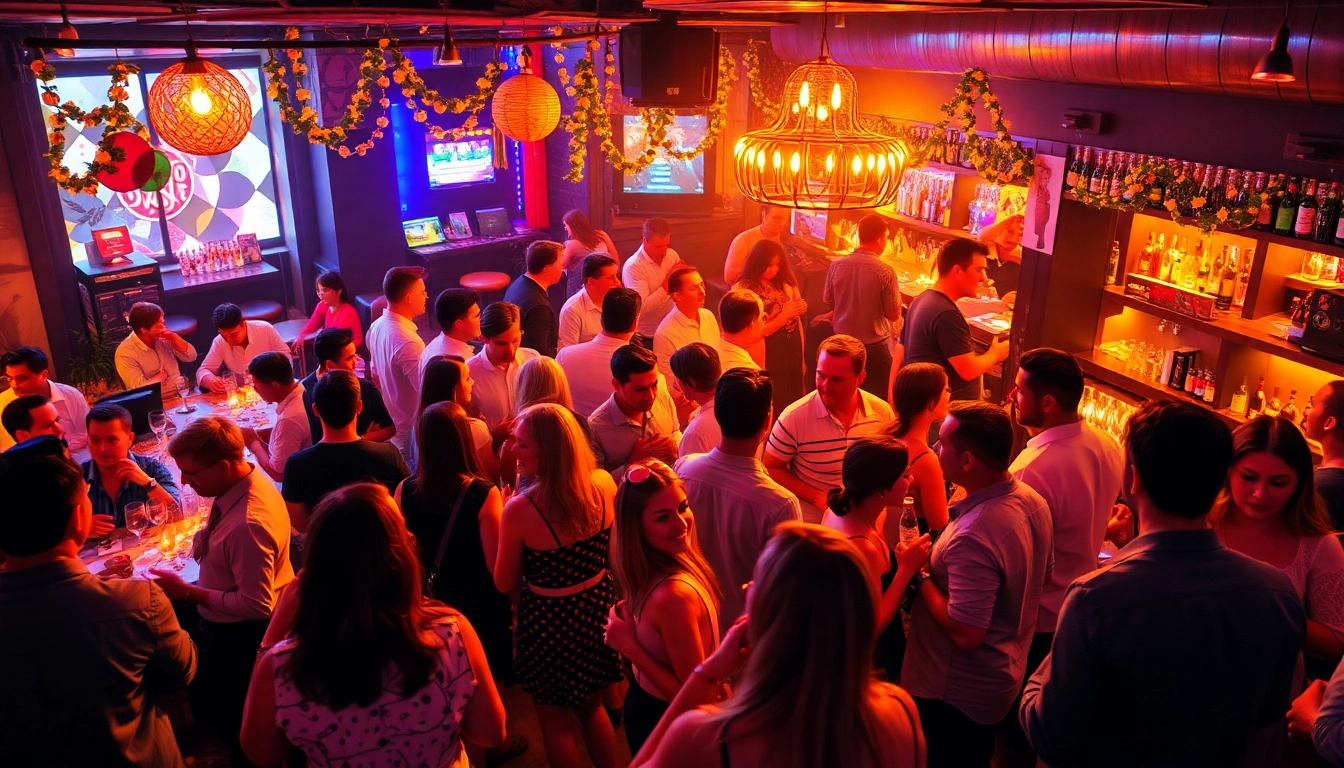Understanding the Touring Landscape
In the music industry, touring is an essential aspect of an artist’s career and success. It provides not only a significant source of income but also an opportunity for solo artists and bands to connect with their fans on a deeper level. Through live shows, artists can share their music firsthand, create memorable experiences, and promote their brand. Touring has transformed dramatically over the years with the rise of technology, changing music consumption patterns, and evolving audience expectations. In this section, we will explore the importance of touring for artists, the different types of tours, and the current trends shaping the touring experience.
The Importance of Touring for Artists
Touring plays a crucial role in the music industry, serving multiple purposes for artists. Firstly, it acts as a primary revenue stream, especially as album sales diminish in the digital age. Merchandise sales during live performances significantly boost earnings, with some artists finding that up to 50% of their income comes from touring and merchandising. Moreover, touring is an excellent avenue for marketing new music directly to fans, allowing artists to perform new songs ahead of an official release and gauge audience reactions.
Beyond financial benefits, touring is vital for enhancing an artist’s visibility and reach. By performing at various venues across different regions, artists can attract new fans while retaining their loyal followers. Additionally, touring fosters engagement with the audience, leading to a community feel as fans share experiences, create content around the concerts, and promote the artist via word of mouth. Ultimately, a successful tour can elevate an artist’s career and solidify their place in the music industry.
Types of Tours: Regional vs. National
When planning a tour, artists and their management often weigh their options between regional and national touring. Each type has distinct advantages and challenges. Regional tours typically focus on specific geographic areas, such as states or nearby cities. This approach allows for more intimate performances and a chance to cultivate a loyal fan base in particular locales. Regional tours also require less logistical planning, making them more accessible for emerging artists or acts with limited budgets.
On the other hand, national tours involve traveling across the entire country and often feature larger venues, allowing for broader exposure. National tours can create a substantial impact on an artist’s brand, enabling them to reach audiences that may not have previously encountered their music. However, they come with higher costs, advanced planning, and more extensive marketing efforts. The choice between regional and national touring ultimately hinges on the artist’s goals, budget constraints, and overall career strategy.
Current Trends in Touring
The touring landscape is continuously evolving, influenced by technological advancements and societal shifts. One notable trend is the rise of hybrid tours, where artists blend live performances with virtual experiences, allowing fans from across the globe to participate. This approach became particularly prominent during the COVID-19 pandemic when many live events were canceled or postponed. Artists adapted by hosting livestream concerts that reached millions worldwide, extending their reach beyond geographical limitations.
Another trend is the focus on sustainability within the touring industry. As environmental consciousness grows, artists and venues are seeking ways to minimize their carbon footprint. Initiatives include using eco-friendly materials for merchandise, reducing waste at shows, and opting for greener transport methods. This shift not only resonates with eco-minded fans but can also create a positive brand image for the artist.
Lastly, there’s an increasing emphasis on inclusivity and accessibility at events. Artists are making concert experiences more accommodating for fans with disabilities and advocating for diverse lineups, allowing for a broader spectrum of artistic expression. These trends reflect the evolving nature of the industry and the necessity of adapting to meet fans’ needs.
Planning Your Tour: Essential Steps
Successful touring requires careful planning and organization. From setting objectives to budgeting and choosing the right venues, each step is critical to the overall success of a tour. Here, we will delve into essential steps involved in planning your tour, ensuring it is well-executed and impactful.
Setting Objectives for Your Tour
Before embarking on a tour, it’s vital to establish clear objectives. Questions to consider include: What do you aim to achieve with this tour? Are you introducing new music, growing your fan base, or increasing revenue? Defining your goals helps guide decision-making and provides a roadmap throughout the touring process.
It can also be beneficial to create measurable targets, such as increasing social media engagement by a specific percentage, growing your mailing list, or selling a set amount of merchandise per venue. These concrete objectives enable artists and their management to assess the tour’s effectiveness and make data-driven adjustments as necessary.
Budgeting for a Successful Tour
Budgeting is one of the most crucial aspects of tour planning. To create a comprehensive budget, artists need to account for a variety of expenses, including lodging, transportation, meal costs, and salaries for crew members. Additionally, don’t overlook the hidden costs like promotional material, insurance, and fees associated with venues. Proper budgeting helps avoid financial pitfalls and ensures all aspects of the tour are covered.
Using tools like spreadsheets or budgeting software can streamline this process. It’s also wise to establish a contingency fund to account for unexpected expenses. A well-planned budget not only supports the financial stability of the tour but also helps artists focus on their performances rather than financial stressors.
Choosing Venues and Locations
Selecting the right venues for your tour is imperative to attracting the desired audience. Consider factors such as venue capacity, location accessibility, acoustics, and the local music scene. Ideally, venues should align with the artist’s style and target demographic, aiding in fostering a connection with the audience.
Researching local markets can also prove beneficial. For instance, some cities may have a strong appreciation for a specific genre, while others may attract a mixed crowd. If possible, leverage prior performance data to gauge the best cities and venues for your tour. Engaging with local promoters can also expedite the process, as they often have valuable insights into venue suitability.
Marketing Your Tour Effectively
Effective marketing is key to attracting audiences and creating a buzz around your tour. In today’s digital age, various platforms and strategies can be leveraged to maximize outreach and engagement before, during, and after the tour.
Utilizing Social Media for Engagement
Social media platforms such as Instagram, Twitter, and TikTok have revolutionized how artists communicate with fans. They enable direct interaction, which can help build excitement and engagement around an upcoming tour. Consistent updates, sneak peeks of setlists, exclusive behind-the-scenes content, and engaging with fan-generated content are all effective strategies to maintain buzz.
Creating targeted post ads can also help reach audiences that may not already follow the artist. Utilizing geo-targeting features allows artists to promote specific shows to local fans effectively. Additionally, running contests or giveaways related to the tour can further boost engagement, prompting fans to share the content with their networks.
Creating Compelling Promotional Material
High-quality promotional material is essential for generating excitement for your tour. This includes eye-catching posters, videos, and graphics that reflect the artist’s brand and the experience fans can expect. Ensure that all promotional materials are consistent in style and messaging to reinforce the artist’s identity.
Using captivating visuals and engaging descriptions helps convey the essence of the tour, while also including essential information such as dates, venues, and ticket purchase links. Collaborating with graphic designers or multimedia artists can elevate promotional materials and enhance their appeal.
Partnering with Local Influencers
Building relationships with local influencers in each city can greatly enhance the tour’s reach. Influencers often have dedicated followings who trust their recommendations. By collaborating with them, artists can tap into new audiences who may not otherwise discover their music.
Influencers can be invited to shows, participate in social media promotions, or even create content that showcases the artist’s brand. In turn, this partnership helps create a broader buzz around the artist, driving ticket sales and engagement.
Engaging Your Audience During the Tour
Once the tour is underway, it’s crucial that artists continue to engage their audience on a personal level, ensuring that fans have memorable experiences. This engagement can help create loyalty, encouraging fans to return for future shows and recommend the artist to new listeners.
Innovative Stage Performance Techniques
Performance quality can significantly enhance audience engagement. Artists today are utilising innovative stage techniques to create immersive concert experiences. This might include elaborate stage designs, interactive elements, or unique collaborations with other artists or performers.
For instance, integrating visual art into performances or utilizing augmented reality can elevate the concert experience, making it unforgettable. Audience interaction, such as inviting fans onstage or directly addressing them through the performance, fosters a stronger connection and enhances their overall experience.
Building a Community Around Your Music
Community is at the heart of music culture. Artists can foster a sense of belonging among fans by creating spaces for interaction, both online and offline. Initiatives like fan clubs, special fan-only events, or dedicated hashtags can promote connections among fans.
Additionally, involving fans in the creative process—such as voting on setlists or participating in Q&A sessions—creates an inclusive environment. This strengthens the community and encourages fans to spread the word about the artist, resulting in organic growth and increased engagement.
Collecting Feedback from Fans
Feedback is a vital component in developing an artist’s career. Artists can actively seek feedback through post-show surveys or engaging on social media to understand what fans enjoyed and what areas could be improved. This engagement not only helps the artist grow but also makes fans feel valued.
Utilizing testimonials and fan clips from tours can also create compelling content for future promotions. Incorporating real-time feedback can influence future performances, create a more integrated experience, and develop loyalty among the fan base.
Measuring Tour Success
After the tour concludes, measuring its success is essential for artists and their management teams. Analyzing various metrics allows musicians to understand what worked, what didn’t, and how they can enhance future touring strategies.
Key Performance Indicators for Touring
Adopting specific key performance indicators (KPIs) enables a structured approach to measurement. KPIs might include ticket sales figures, merchandise revenue, social media engagement metrics, and post-show attendance surveys. Assessing these indicators paints a clear picture of the tour’s overall effectiveness.
Additionally, tracking growth in social media followers, mailing list signups, and press mentions can provide insights into audience engagement and brand expansion during the tour. This data is invaluable for evaluating performance and informing future decisions.
Post-Tour Analysis and Insights
Post-tour analysis can highlight successes and areas for improvement. Teams can evaluate sales data alongside qualitative feedback to identify trends. For instance, understanding which venues sold the most tickets can inform future location choices, while analyzing merchandise bestsellers can help tailor offerings to fan preferences.
Engaging with crew and staff for feedback on logistics can also provide valuable insights into operational efficiencies or potential enhancements for future tours.
Leveraging Tour Experiences for Future Projects
The experiences and insights gained from touring should be utilized to inform future musical projects. Whether through the connections made with fans or the performance data collected, this information can guide an artist’s creative direction, influence future music releases, or shape promotional strategies for upcoming work.
Additionally, successful tours provide a wealth of content for marketing campaigns. Highlight reels, fan stories, or behind-the-scenes footage can be harnessed to create engaging marketing material that keeps fans excited about future projects and builds anticipation for upcoming releases.



